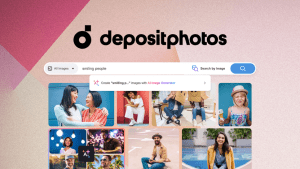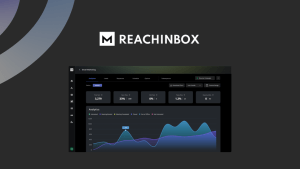Best banking email designs are clean, professional, and user-friendly. They prioritize clarity, simplicity, and a strong call to action.
Effective email design in banking is crucial for engaging customers and fostering trust. Emails should be visually appealing and easy to navigate. Clear headings, concise content, and a compelling call to action are essential. Personalization can significantly enhance the user’s experience, making the email more relevant.
Including security tips or updates helps reassure customers about their financial safety. Mobile optimization ensures the email is accessible on all devices. A well-designed email can increase customer retention and drive conversions. Consistent branding throughout the email reinforces the bank’s identity and builds recognition. Effective banking emails balance aesthetics with functionality.

Credit: www.pinterest.com
Introduction To Banking Email Designs
Banking email designs are crucial for customer engagement. They help in building trust. A well-designed email can make a significant difference. It can convert potential customers into loyal clients. Let’s explore the key aspects of banking email designs.
Importance Of Design
The design of an email is more than just aesthetics. It directly impacts readability. A clean and organized layout is essential. It ensures that the message is clear. Use of colors and fonts should be consistent. It helps in establishing brand identity.
Here are some key elements:
- Consistency: Maintain uniformity in design.
- Readability: Ensure the text is easy to read.
- Visual Appeal: Use images and graphics wisely.
Engagement And Trust
An engaging email keeps the reader interested. Trust is built through transparency. Including personalized content boosts engagement. Customers feel valued and connected.
Important aspects include:
- Personalization: Use the customer’s name and preferences.
- Clear Call-to-Action (CTA): Guide the user on the next steps.
- Transparency: Provide clear and honest information.
Best Practices
Here are some best practices for banking email designs:
| Practice | Benefit |
|---|---|
| Mobile Optimization | Ensures accessibility on all devices |
| Strong Subject Line | Increases email open rate |
| Simple Layout | Enhances user experience |
Key Elements Of Effective Email Designs
Creating effective email designs for banking can be challenging. The key is to combine functionality with aesthetics. This ensures customers engage and respond positively. Below, we explore the key elements of effective email designs.
Visual Appeal
Visual appeal is crucial in email design. It catches the reader’s eye and keeps them engaged. Use a clean layout with plenty of white space. This makes the email easy to read.
Images should be high-quality and relevant. Avoid cluttering the email with too many visuals. Stick to a consistent color scheme. This builds brand recognition and trust.
Consider using icons and graphics to break up text. This makes the information more digestible. Here’s a simple example of a visually appealing email layout:
 |
|
We offer the best banking services. Enjoy our secure and convenient options. |

|
Clear Call-to-actions
Every email needs a clear call-to-action (CTA). This tells the reader what to do next. Use bold buttons and concise text for your CTA.
Examples of effective CTAs include:
- Sign Up Now
- Learn More
- Get Started
Place the CTA button where it stands out. Ensure it contrasts with the background color. This grabs the reader’s attention.
Here is an example of a clear CTA in an email:
Effective email designs are visually appealing and have clear CTAs. These elements enhance user experience and drive action.
Personalization In Banking Emails
Personalization in banking emails is crucial for customer engagement. It helps in building trust and loyalty. Personalized emails can significantly increase open rates and conversions. Let’s explore two key elements of personalization: Customer Segmentation and Dynamic Content.
Customer Segmentation
Customer segmentation divides a bank’s customer base into specific groups. These groups are based on demographics, behaviors, or preferences. Segmentation allows banks to send targeted messages.
- Demographic Segmentation: Age, gender, income, and location.
- Behavioral Segmentation: Spending habits, account usage, and transaction history.
- Psychographic Segmentation: Lifestyle, values, and interests.
Targeted emails can address the specific needs of each segment. This results in higher engagement and customer satisfaction.
Dynamic Content
Dynamic content is content that changes based on the recipient’s data. This can include the customer’s name, account information, or transaction history.
Here are some examples of dynamic content in banking emails:
| Type of Dynamic Content | Example |
|---|---|
| Personalized Greetings | Hi, John! Welcome back. |
| Transaction Summaries | Your last transaction was $50 at XYZ Store. |
| Account Alerts | Your account balance is below $100. |
Dynamic content makes emails more relevant and engaging. This boosts the likelihood of customer interaction.

Credit: in.pinterest.com
Responsive And Mobile-friendly Designs
In today’s digital world, responsive and mobile-friendly email designs are vital. Many users access their emails on mobile devices. Banks must ensure their email designs look good on all screens. This section explores the key elements of making banking emails responsive and mobile-friendly.
Adaptive Layouts
Adaptive layouts adjust according to the device’s screen size. This ensures a seamless experience for users. Use media queries in your CSS to achieve this. Media queries help in applying different styles for different screen sizes.
| Screen Size | Layout |
|---|---|
| Desktop | Multi-column layout |
| Tablet | Two-column layout |
| Mobile | Single-column layout |
Here is an example of a media query:
@media only screen and (max-width: 600px) {
.content {
display: block;
width: 100%;
}
}
Testing Across Devices
Testing across devices ensures your email works everywhere. Use tools like Email on Acid or Litmus for testing. These tools simulate how your email looks on different devices and email clients.
- Check for font readability
- Ensure images load correctly
- Verify links are clickable
Always test your email before sending it out. This avoids any rendering issues.
Security Features In Email Designs
In the digital age, security is paramount in banking email designs. Customers must feel safe when they receive emails from their banks. The right security features enhance trust and protect sensitive information.
Encryption
Encryption ensures that email content remains private. Only the intended recipient can read the message. This feature is essential in banking emails, where sensitive data is shared.
- Emails are encrypted during transmission.
- Only authorized parties can decrypt the emails.
- Prevents unauthorized access to sensitive information.
Encryption uses complex algorithms to protect data. This makes it nearly impossible for hackers to intercept emails. By encrypting emails, banks safeguard customer information effectively.
Authentication Indicators
Authentication indicators help customers identify legitimate emails. These indicators show that the email is genuinely from the bank.
- DKIM (DomainKeys Identified Mail) verifies the sender’s identity.
- SPF (Sender Policy Framework) checks the sender’s IP address.
- DMARC (Domain-based Message Authentication, Reporting & Conformance) aligns SPF and DKIM.
These protocols ensure that emails are not spoofed. Authentication indicators build trust and improve email security. Customers can confidently interact with authenticated emails.
Banks often use visual cues to indicate authentication. These cues include:
- Green padlocks.
- Verified sender logos.
- Trust badges.
These visual cues reassure customers about email authenticity. They help prevent phishing attacks and fraud.
| Feature | Description |
|---|---|
| Encryption | Protects email content from unauthorized access. |
| Authentication Indicators | Verifies the sender’s identity to prevent spoofing. |
By implementing these security features, banks ensure safe communication. This builds customer trust and protects sensitive data.
Credit: chamaileon.io
Case Studies Of Successful Banking Emails
In today’s digital world, banking emails play a crucial role in customer engagement. They can build trust, provide information, and drive action. This section will highlight case studies of successful banking emails that have made a significant impact.
Real-world Examples
Real-world examples provide insights into effective banking email designs. They show how different banks use email marketing to achieve their goals.
Case Study 1: ABC Bank’s Welcome Email
ABC Bank sent a welcome email to new customers. This email had a clear subject line: “Welcome to ABC Bank!” The design was clean and simple.
- Personalized greeting: “Hello, [Customer Name]”
- Brief overview of services
- Call-to-action button: “Get Started”
Case Study 2: XYZ Bank’s Monthly Statement Email
XYZ Bank sends a monthly statement email with a detailed breakdown. The email includes:
- Account summary
- Transaction details
- Contact information for support
Lessons Learned
Analyzing these case studies reveals several important lessons.
Personalization Matters
Personalized emails make customers feel valued. Use the customer’s name and relevant information.
Clear Call-to-Actions
A strong call-to-action (CTA) encourages customers to take the next step. Ensure the CTA is visible and compelling.
Simplicity and Clarity
Emails should be easy to read. Use simple language and clear formatting.
Mobile Optimization
Many customers read emails on their phones. Optimize email design for mobile devices.
Testing and Feedback
Test different email designs and gather feedback. Use this data to improve future emails.
| Bank | Email Type | Key Features |
|---|---|---|
| ABC Bank | Welcome Email | Personalized, Simple Design, Clear CTA |
| XYZ Bank | Monthly Statement | Detailed Breakdown, Support Info |
Tools And Resources For Designing Emails
Creating the best banking email designs requires the right tools and resources. These tools help streamline the design process and ensure professional results. Here, we explore some top choices to enhance your email design workflow.
Design Software
Design software is essential for crafting stunning email templates. Here are some popular options:
- Adobe XD: Ideal for creating detailed email designs.
- Sketch: A favorite among designers for its simplicity.
- Figma: Great for team collaboration and real-time design.
Each software offers unique features to enhance your design process. Choose the one that fits your needs and preferences.
Email Marketing Platforms
Email marketing platforms help you manage and send your designed emails. They offer various features to optimize your email campaigns.
| Platform | Features |
|---|---|
| Mailchimp | Drag-and-drop editor, automation, analytics |
| Constant Contact | Template library, list management, reporting |
| Campaign Monitor | Customizable templates, A/B testing, segmentation |
Using these platforms ensures your emails are not only beautiful but also effective. They help you track performance and make data-driven decisions.
Future Trends In Banking Email Designs
The world of banking email designs is evolving. Banks are adopting new technologies. These changes aim to enhance user engagement. Future trends focus on AI integration and interactive elements. These innovations promise to make emails more effective and engaging.
Ai Integration
Artificial Intelligence is transforming email designs. AI can personalize emails for each user. This makes the emails more relevant. AI can analyze user behavior. It uses this data to tailor messages.
AI can also automate responses. This ensures quick and accurate customer service. AI can help detect fraud. It provides an extra layer of security. Banks can use AI to improve email content and timing. This enhances customer satisfaction.
Interactive Elements
Interactive elements make emails more engaging. Users can interact without leaving their inbox. This includes features like clickable images and embedded forms.
Interactive emails can include mini-games or quizzes. These engage users and provide valuable insights. Banks can use interactive surveys to gather feedback. This helps improve services.
Here is a table summarizing the benefits of these trends:
| Trend | Benefit |
|---|---|
| AI Integration | Personalized content, automated responses, fraud detection |
| Interactive Elements | Enhanced engagement, immediate feedback, user-friendly |
Adopting these trends can enhance the user experience. They make banking emails more efficient and secure.
Frequently Asked Questions
What Makes A Banking Email Design Effective?
An effective banking email design is visually appealing, easy to read, and mobile-friendly. It should include clear calls-to-action, personalized content, and secure messaging. Using trust signals like logos and customer testimonials can also enhance credibility.
How Can Banks Personalize Email Designs?
Banks can personalize email designs by using customer data to tailor content. They can address recipients by name, suggest relevant products, and include personalized offers. Dynamic content and segmentation can further enhance personalization.
Why Is Mobile Optimization Important For Banking Emails?
Mobile optimization is crucial because most users check emails on their smartphones. A mobile-friendly design ensures readability, faster loading times, and better user experience. It also increases engagement and conversion rates.
What Are Common Mistakes In Banking Email Designs?
Common mistakes include cluttered layouts, too much text, and unclear calls-to-action. Avoid using non-responsive designs and generic content. Always test emails on multiple devices to ensure compatibility and effectiveness.
Conclusion
Creating engaging and effective banking email designs is crucial for customer satisfaction. Aim for clarity, personalization, and visual appeal. Incorporate these design tips to enhance your email campaigns. Always test and optimize for better performance. Elevate your banking communications and build stronger customer relationships with these best practices.







